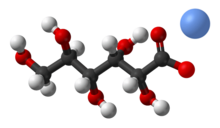Term: Sodium gluconate
Production:
– Sodium Gluconate produced via fermentation or chemical synthesis.
– Fermentation process involves glucose fermentation by microorganisms like Aspergillus niger.
– Gluconic acid derived from fermentation serves as precursor.
– Conversion to Sodium Gluconate involves neutralizing gluconic acid with sodium hydroxide.
– Purification includes filtration and chemical treatments, followed by crystallization and drying.
Applications:
– Early use in medicine, expanded to food, pharmaceuticals, construction, textiles, and more.
– Food Industry: Acts as a sequestrant to maintain food stability.
– Construction: Used as a concrete admixture to enhance performance.
– Textiles: Utilized as a chelating agent to improve color fastness.
– Metallurgy: Employed for metal surface treatment and cleaning.
Safety and Regulation:
– Generally recognized as safe (GRAS) by regulatory authorities.
– Considered non-toxic and safe for consumption in food and pharmaceuticals.
Environmental Impact:
– Known for biodegradability, breaking down naturally in the environment.
– Considered environmentally friendly.
References:
– Chemistry id sis.nlm.nih.gov (dead link).
– Sodium Gluconate (Chelating Agent): Cosmetic Ingredient INCI.
– Papagianni, M. Comprehensive Biotechnology. Academic Press.
– Sodium Gluconate Santos.com December 2021.
This article needs additional citations for verification. (February 2024) |
Sodium gluconate is a compound with formula NaC6H11O7. It is the sodium salt of gluconic acid. Its E number is E576. This white, water-soluble powder has a wide range of applications across industries. Originally derived from gluconic acid in the 19th century, Sodium Gluconate is known for its chelating properties and is utilized as a chelating agent in various processes. It finds applications in textile, metal surface treatment, cement, and more. Moreover, its non-toxic nature and biodegradability contribute to its use in environmentally conscious practices.

| |

| |
| Names | |
|---|---|
| IUPAC name
Sodium (2R,3S,4R,5R)-2,3,4,5,6-pentahydroxyhexanoate
| |
| Other names
Sodium D-gluconate
| |
| Identifiers | |
3D model (JSmol)
|
|
| ChEBI | |
| ChEMBL | |
| ChemSpider | |
| ECHA InfoCard | 100.007.644 |
| E number | E576 (acidity regulators, ...) |
PubChem CID
|
|
| UNII | |
CompTox Dashboard (EPA)
|
|
| |
| |
| Properties | |
| C6H11NaO7 | |
| Molar mass | 218.137 g·mol−1 |
| Appearance | White powder |
| Odor | Odorless |
| 58 g/100 mL | |
| Solubility in ethanol and diethyl ether | Slightly soluble |
| Hazards | |
| Lethal dose or concentration (LD, LC): | |
LD50 (median dose)
|
10380 mg/kg (oral, rat) |
Except where otherwise noted, data are given for materials in their standard state (at 25 °C [77 °F], 100 kPa).
| |
